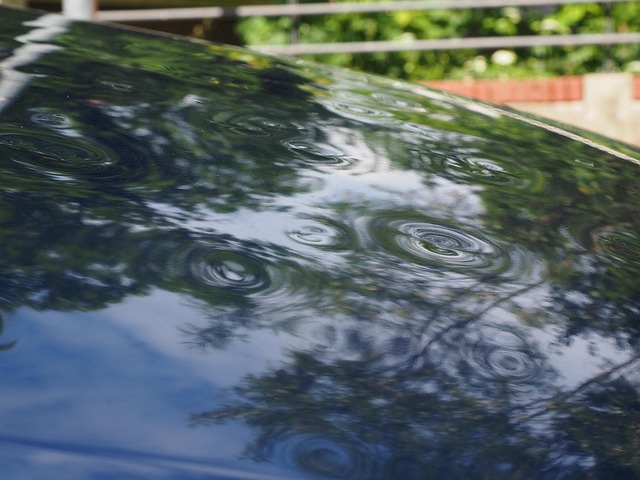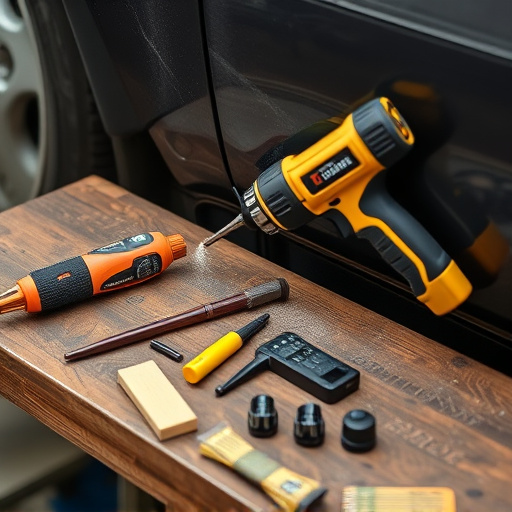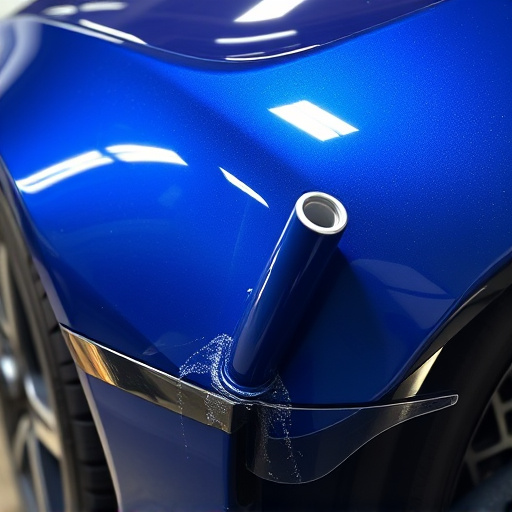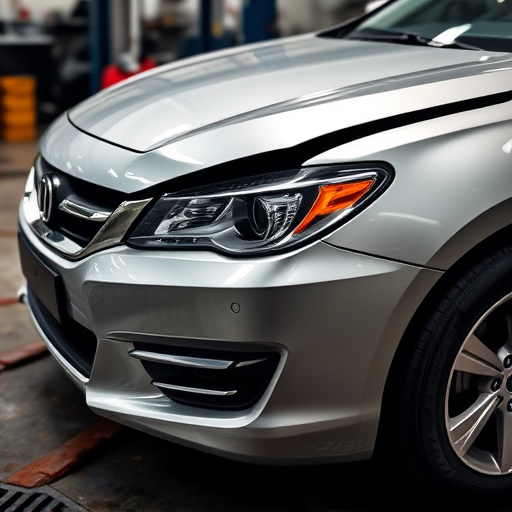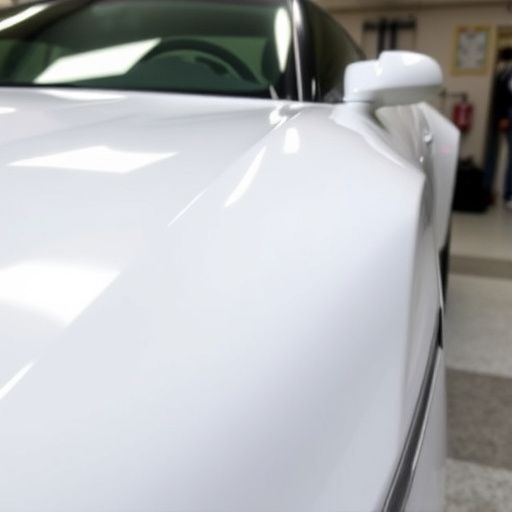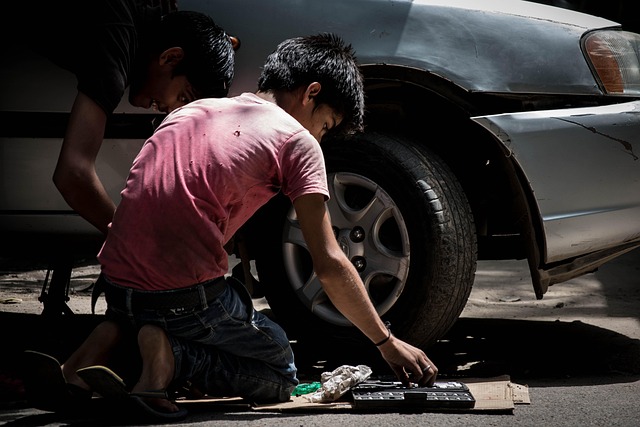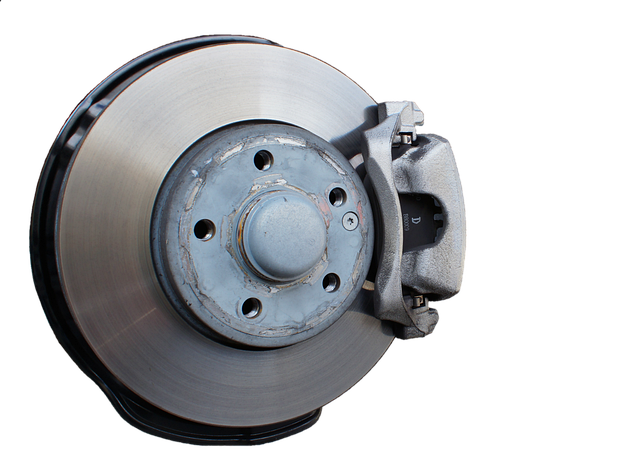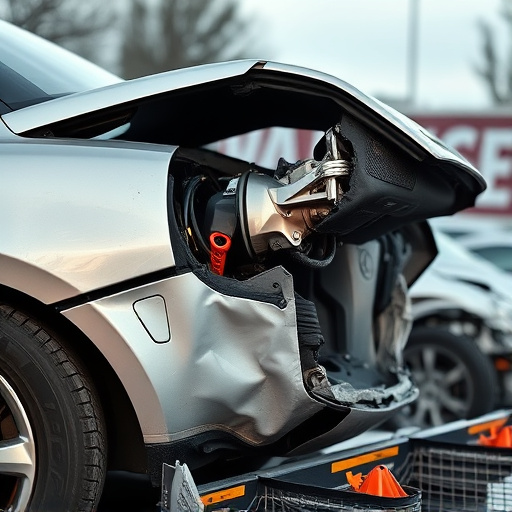Aluminum panel dent repair is a specialized craft for modern cars' lightweight aluminum bodies, combining skilled technicians and advanced tools to restore damage without compromising structural integrity or aesthetic appeal, crucial for brands like Mercedes Benz. Techniques vary between vintage manual methods and today's robotic systems, ensuring precise repairs that maintain the overall condition of contemporary vehicle bodyworks.
Aluminum panel dent repair has become a vital service in the automotive industry, catering to various car models with unique structural designs. Understanding the intricacies of aluminum panels and their damage is key to effective repairs. This article delves into the process, from initial inspection to final touch-ups, showcasing effective techniques tailored for diverse vehicle models. By exploring these methods, you’ll gain insights into how professionals address and mitigate dents in aluminum panel cars, ensuring optimal results.
- Understanding Aluminum Panel Structure and Damage
- The Process: From Inspection to Repair
- Effective Techniques for Different Car Models
Understanding Aluminum Panel Structure and Damage
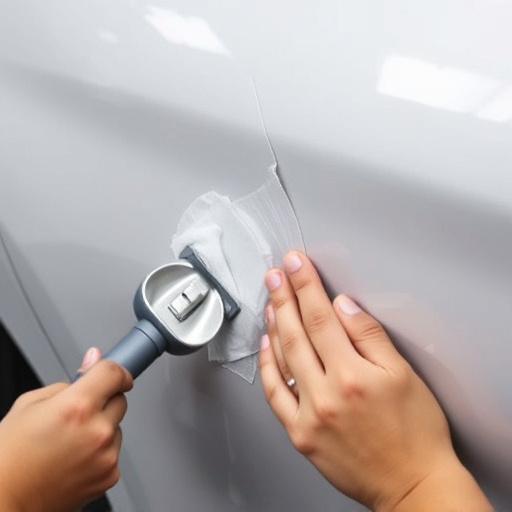
Aluminum panel dent repair is a specialized process tailored to the unique structure and properties of aluminum automotive panels. Unlike steel bodies, which are known for their flexibility and impact absorption, aluminum panels offer a lighter alternative but require a different approach when damaged. These panels are typically made from lightweight alloys, combining strength with reduced weight, which is crucial for modern vehicle design. When a dent or damage occurs, it can vary in size and shape, affecting the structural integrity of the panel.
Understanding how these dents form is essential in the repair process. From minor door dings to more severe impacts, each damage type requires specific techniques. The goal is to restore the panel to its original shape without compromising its strength. Aluminum dent repair involves specialized tools and methods like pneumatic hammers, heat guns, and precision-cut fillers, ensuring that the car body repair is not only aesthetically pleasing but also maintains the vehicle’s structural integrity, which is vital for safety and performance.
The Process: From Inspection to Repair
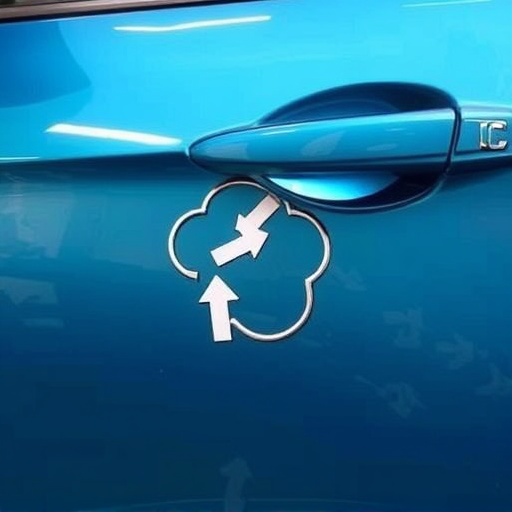
The process of aluminum panel dent repair is a meticulous art that requires skilled hands and precision tools. It begins with a thorough inspection of the damaged area, where experienced technicians assess the extent of the dent using specialized equipment. This initial step is crucial as it determines the best course of action for repairs, ensuring an accurate and effective solution tailored to the specific car model.
Once the dent is accurately identified, the repair process commences. The auto body shop employs a range of techniques, from manual tools to advanced machinery, to gently manipulate the aluminum panel back into its original shape. This meticulous work involves careful removal of any excess dented metal and precise realigning of the panel. In the case of Mercedes Benz collision repair or similar luxury vehicle brands, the focus remains on preserving the vehicle’s aesthetic appeal and structural integrity, ensuring that every detail, from the vehicle bodywork to its sleek design, is flawlessly restored.
Effective Techniques for Different Car Models
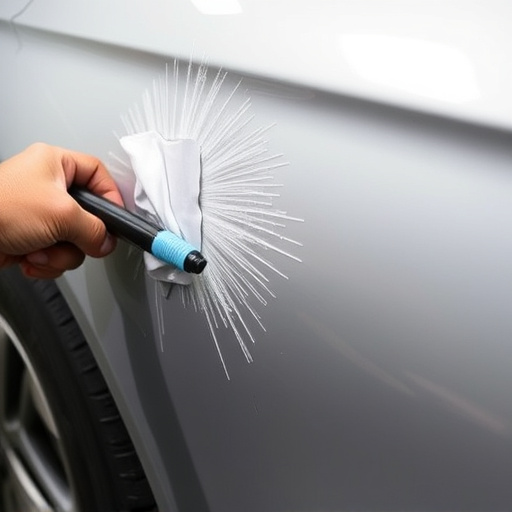
When it comes to aluminum panel dent repair, different car models present unique challenges and require tailored techniques. For older vehicles, a hands-on approach often proves effective. This may involve using specialized tools for prying out and smoothing dents, ensuring that the original shape of the panel is preserved. The key here is precision, as these cars typically have intricate designs that demand careful handling.
Modern cars, on the other hand, often feature more complex paneling and advanced manufacturing techniques. For these models, a combination of manual and machine-assisted methods is usually best. Robotic systems can precisely locate and correct dents, while skilled technicians oversee the process to address any unique characteristics specific to each car model. This blend of technology and human expertise ensures that contemporary vehicle bodyworks are restored to their original condition, maintaining the car’s overall aesthetic and value.
Aluminum panel dent repair is a precise process that varies slightly based on car model, but understanding the commonalities across different vehicles can help drivers navigate this option effectively. By inspecting the damage, choosing suitable techniques like PDR (Paintless Dent Repair) or more invasive methods, and ensuring proper restoration, owners can restore their cars to their original sleek appearance. This conclusion highlights the versatility of aluminum panel dent repair, making it a viable solution for various car models while emphasizing the importance of professional expertise.
